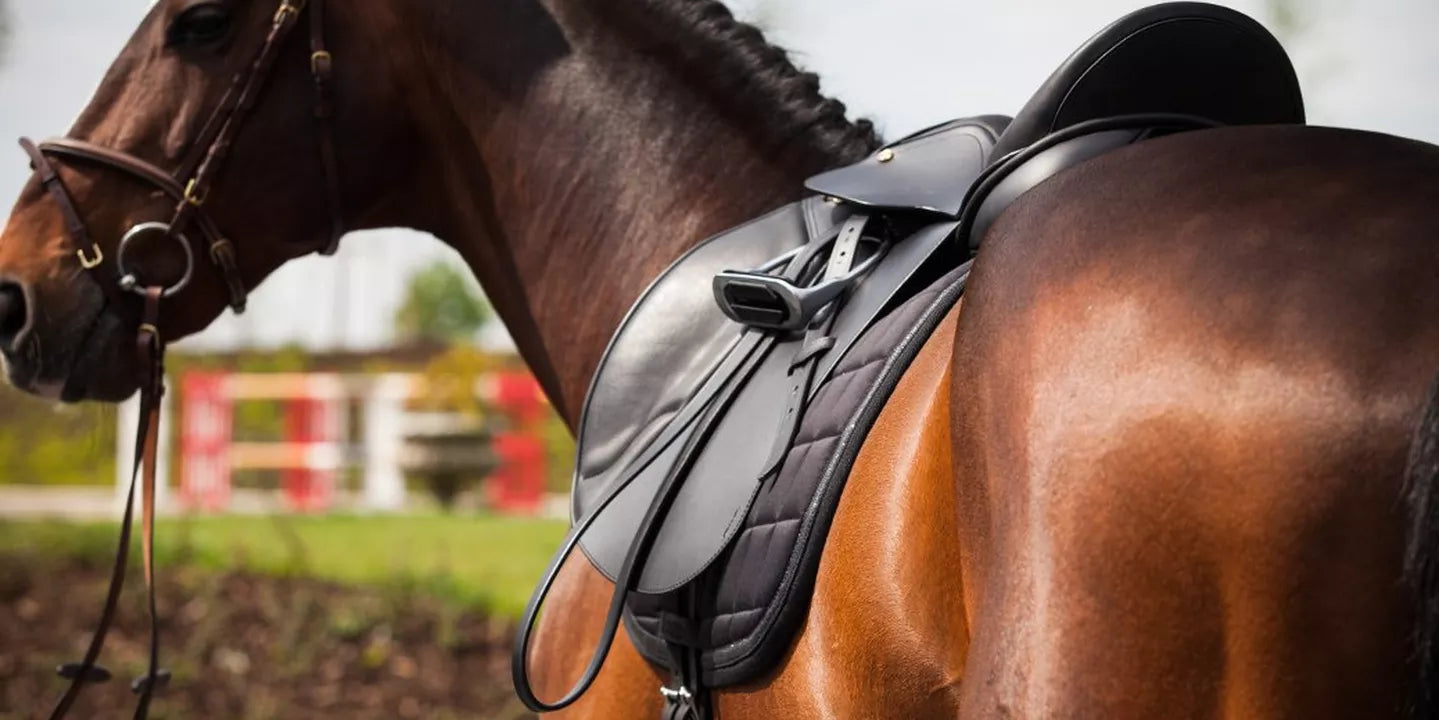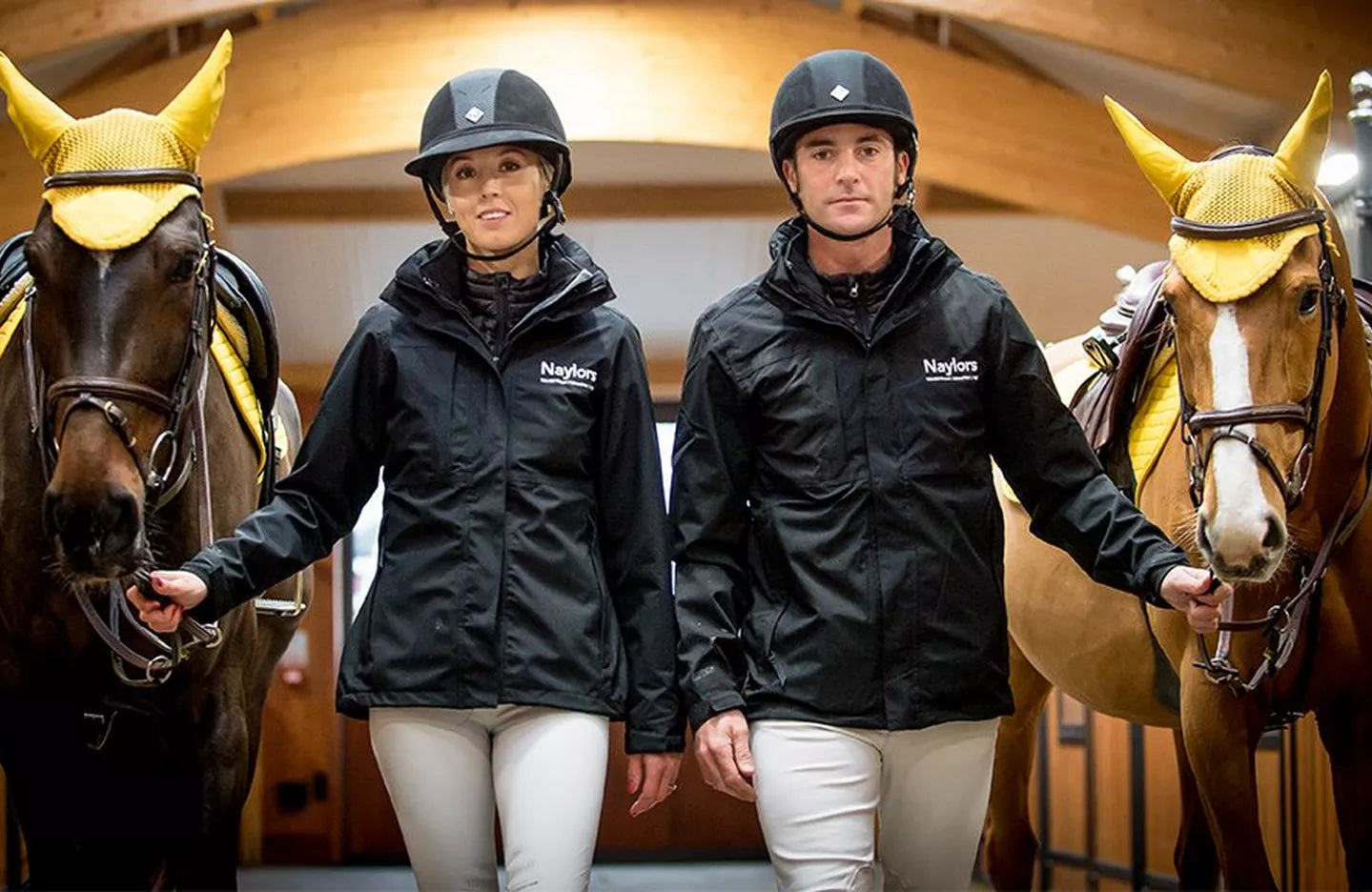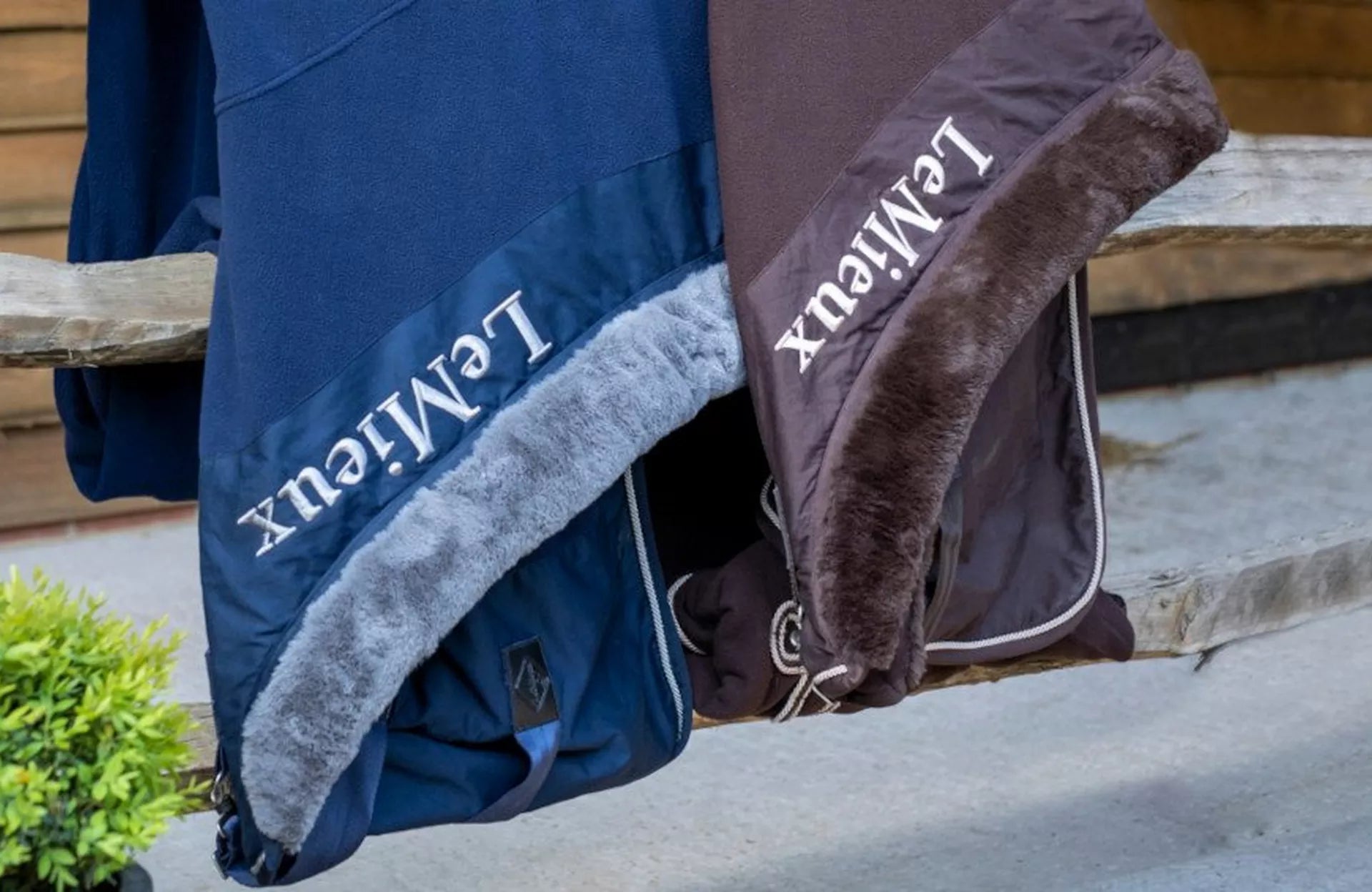Tack is an essential piece of kit for all horse riders and it is important to regularly check your tack fits correctly. Whether you are a happy hacker or compete regularly, correctly fitting tack will ensure your horse is happy and can perform to the best of his ability without hindrance.
Why is it important to have correctly fitting tack?
Incorrectly and badly fitting tack can cause discomfort to your horse which can result in behavioural issues both when riding and on the ground.
What is your horse trying to tell you?
If your horse begins to develop behavioural issues when being tacked up and ridden, or is acting out of character it is worth checking your tack fits correctly. More often than not a horse could be trying to tell you he is in pain or uncomfortable and is not simply ‘being naughty’. Here are some common behavioural issues that can arise due to badly fitting tack:
- Bucking/rearing
- Cold backed, hollowing and hunching of the back
- Becoming head-shy
- Refusal or reluctance to move forwards
- Agitated/aggressive/uncomfortable when girthed
If your horse begins to exhibit any of these signs you should check the fit of your tack.
Physical Signs
Some horses are much more tolerant than others and so will not exhibit any behavioural issues despite being uncomfortable or in pain. It is important to pay close attention to your horse and if you begin to see any significant changes in his physical appearance you should look at what could be causing the changes. Physical signs of badly fitting tack that you should be aware of:
- lumps and bumps appearing on the back (in the saddle area)
- rubs
- sores
- ruffled hair
- hair turning white
Saddle
An incorrectly fitting saddle can cause numerous amounts of problems both physical and behavioural so it is important to ensure your saddle fits correctly. Saddles should be checked by a qualified saddler every 6 months. Saddles can often be adjusted as your horse changes shape. Horses can change shape depending on work load and age; a young horse will develop muscle as he matures whereas an older horse may show signs of muscle wastage.
How To Fit A Saddle
If your horse changes shape, develops behavioural problems or exhibits any physical issues or changes you should get your saddle and tack checked. It is recommended that you get a professional saddle fitter to fit and check your saddle, but we have some general tips that may help when checking whether your saddle fits correctly or not.
- Does the saddle sit level on the horse’s back or does it tip backwards or forwards?
- Is there enough clearance at the withers? As a general rule a 3 finger clearance between the pommel and the withers when mounted is desired. Too low and it will bang the horse’s withers, too high and it is likely to be too narrow for the horse and could cause pinching.
- Can you get fingers all the way down the side panels and do they offer even pressure? Too tight and they will pinch and restrict movement.
- Do the panels sit evenly on the horse’s back? If the panels do not lie evenly it will result in pressure points.
- Is there enough clearance down the gullet? Does it offer ample clearance for the horse’s spine along the length and the width?
- Does the saddle interfere with the horse’s shoulder movement?
- Does the saddle sit too far back or is it too long and puts pressure on the sensitive area behind the ribs?
Bridle
A bridle is a standard piece of kit for any horse rider but it is all too often fitted incorrectly. When a horse begins to develop behavioural issues it is commonly assumed it may be the saddle that doesn’t fit correctly and the bridle gets over looked. As the bridle sits around the delicate areas of the horses face it is important to ensure it fits correctly and is comfortable so your horse can get on with the tasks you ask of him.
Bridles come in standard sizes ranging from small pony to extra full but it is possible to mix and match different pieces if a standard ‘off the shelf’ bridle does not fit your horse.

Image courtesy of Shires Equestrian
How To Fit A Bridle
As a general rule, most areas of the bridle should allow a 2 finger width clearance between straps and the horse’s head.
- Headpiece – should sit comfortably behind the horse’s ears and not dig in or inhibit the ears
- Brow Band – should sit across the horse’s forehead and have a 2 finger width clearance to prevent pinching and not pinch the ears.
- Cheek Pieces – should be buckled as equally as possible and sit flat on the horse’s face. Cheek pieces should hold the bit correctly in the horse’s mouth and not gape when a contact is taken up.
- Throat Lash – should be able to fit a hands width between the cheek and the strap.
Nosebands
There are a variety of nosebands available to suit a variety of requirements. The cavesson noseband is the simplest and most popular. Nosebands are used to prevent the horse evading the bit by opening or crossing the jaw.
- Cavesson Noseband – Should have a 2 finger clearance and not be too high so as to rub on the cheek bone (2 fingers below cheek bone) or too low and interfere with the bit.
- Crank Noseband – Fits similar to a cavesson noseband but a little tighter.
- Flash Noseband – The cavesson part of the noseband should fasten securely so it does not get pulled down by the flash strap but should still have a 1-2 finger clearance. The flash strap should be tight enough to prevent the horse from opening his mouth to evade the bit but should not restrict the horse’s breathing or dig into the skin.
- Grackle/Mexican Noseband – should fit snug but comfortably and allow a 1-2 finger clearance all the way around. Too loose and it will not work correctly, too tight and it will be uncomfortable for the horse and cause unnecessary pressure. The cross over part of the noseband should sit centrally on the horse’s nose, the top straps just below the cheek bones and the lower strap should fasten in the chin groove.
- Drop Noseband – should sit approximately 6cm above the horse’s nostrils and you should be able to slide a finger all the way round. If fitted too tightly the drop noseband can restrict the horse’s breathing and damage the nose. Never to be used with a standing martingale.
Bit
There are many different types of bit available and it can seem like a bit of a mine field when you begin looking for a new bit. A horse that is comfortable in the mouth and happy with his bit will work softly and willingly into an outline. A horse that is uncomfortable in the mouth will exhibit a range or behavioural and physical problems. Here are some signs to look out for.
- Unwilling to take the bit when tacking up.
- High head carriage.
- Opening the mouth or crossing the jaw.
- Sticking the tongue out.
- Unwilling to go forwards into the hand.
- Rubbing and sores around the mouth.
- Sores on the tongue.
- Leaning or grabbing one side of the bit.
If your horse shows any of the above signs you should look at the fit of your tack and bit. It is also recommended to get the horse’s teeth checked by a qualified Equine Dentist or Veterinary Surgeon as your horse’s teeth may be over grown and causing pain.
How To Fit A Bit Correctly
When choosing a bit you should take into consideration the conformation of your horse’s mouth; does he have large fleshy lips, a small mouth, a fat tongue? The shape of your horse’s mouth can greatly influence the comfort and fit of a bit; a horse with a large fleshy tongue will not have room for a thick bit, a horse with fleshy lips may not suit a loose ring bit as it could pinch his lips.
- The bit should extend approximately ¼ inch beyond the lips on both sides. Too tight and it will pinch the lips, too loose and it will slide back and forth through the mouth. The type of bit may influence the gap needed at the side; a fixed cheek bit should sit snugly to the horse’s face without pinching or squeezing whereas a loose ring should sit clear of the lips and have clearance (approximately 1/8 inch) between the loose ring hole and the lips to avoid pinching.
- When a contact is taken up there should be 1-2 wrinkles at the corners of the horse’s mouth. No wrinkles and the bit is too low and will cause discomfort and possibly clash on the horse’s teeth, too high and the bit will pinch and be uncomfortable.

Correctly fitting eggbutt snaffle that sits snug to the face without pinching and has wrinkles at the corner of the mouth.

Incorrectly fitted eggbutt snaffle. This bit is too big for the horse.

Correctly fitted loose ring snaffle. Note the wrinkles at the mouth and the clearance for the loose ring holes.
Girth
The girth is vital piece of equipment that secures the saddle. Girths are available in many different styles, shapes and colours to suit a variety of requirements, saddles and disciplines. A correctly fastened girth should rest approximately a hands width behind the horse’s elbows and should be adjusted gradually and carefully so as not to stress or aggravate the horse.
Training Aids and Accessories
Training aids and accessories must be fitted correctly otherwise they will not do the job intended and could become more of a danger and hindrance than a help.
Martingales
Martingales are used to prevent the horse’s head from coming too high when being ridden. The neck strap should allow a hands width between the horse’s neck and strap, the chest piece should also allow a hands width and the martingale should not hang too low between the horse’s legs as the horse may catch his legs/feet. Martingales should always be used with rein stops to prevent the rings becoming tangled with the bit or billets. Martingales should only come into action when the horse attempts to throw the head too high, if a martingale is fitted too short/tight it will put unnecessary pressure on the horse.
- Running Martingale – The rings should reach to the horse’s withers when stretched tight.
- Standing Martingale – The loop should reach to the horse’s chin when stretched along the length of the gullet.
Breastplates
Breastplates are used to help prevent the saddle from slipping backwards. A breast plate should allow a hands width between the straps and the horse and should be secure enough to come into action when needed to prevent the saddle slipping. If the breast plate is too loose it will not prevent the saddle slipping backwards.
- Hunting Breastplate – attaches to the girth through the horse’s legs and to the D rings of the saddle. The straps attaching to the D rings should be secure enough to hold the saddle in place when needed.
- 5 Point Breastplate – attaches to the saddle at 5 points; the D rings, the girth and between the legs. Straps should be secure enough to prevent the saddle slipping without restricting movement.

A Hunting breastplate can help prevent a saddle slipping backwards.
Numnahs & Saddle Pads
Numnahs and saddle pads are used to keep the underside of the saddle clean and as extra comfort for the horse, particularly those that are sensitive. Numnahs and saddle pads should be washed regularly to prevent a build up of dirt and sweat and should lie flat underneath the saddle to prevent any pressure points or rubs. There are many different shapes, styles and colours of numnahs and saddle pads suitable for a variety of requirements.
Fitting a Numnah or Saddle Pad
- There should be a clear margin between the edge of the saddle and the numnah or saddle pad to prevent pressure points (approx 1 inch/2cm all the way around the saddle). The saddle should not be sitting on the binding of the pad at any point.
- The numnah/saddle pad should sit up into the gullet of the saddle to prevent pressure on the spine.
- Ensure the pad is not pressing onto the withers.
- Secure with straps to ensure the pad does not slip.
- Ensure the pad is sitting centrally and lies flat on the back with no creases or folds.
Summary
If you suspect that you horse could be suffering from ill fitting tack, use this article as a reference for the clearance that each item needs and how it should sit on your horse. Simple, minor tweaks or replacing just individual items in your overall set up could have a dramatic impact on your riding experience and the happiness of your horse.
Do you have a tack top tip that’s dramatically improved your riding? Let us know below.








